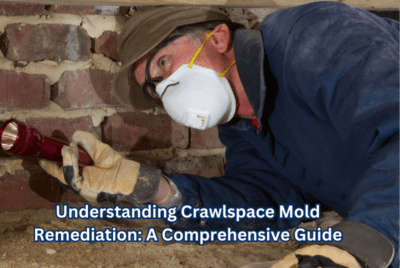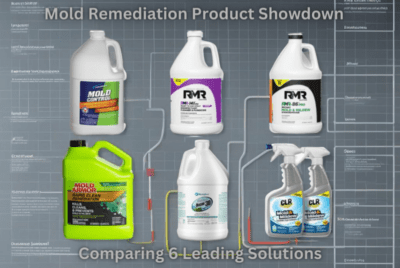Mold in Shower: Expert Advice for Effective Remediation
Mold growth in the shower can be a persistent and concerning issue. As an expert advisor on mold remediation, I understand the challenges associated with this problem and the need for effective solutions. In this article, I will provide you with valuable suggestions and reasons for dealing with mold in the shower. By following these tips, you can prevent mold growth, safeguard your health, and maintain a clean and hygienic bathroom environment.
Understanding Mold
Mold is a type of fungus that thrives in moist and warm environments. It reproduces by releasing spores into the air, which can settle and grow on various surfaces. In the shower, mold tends to develop due to the presence of moisture, inadequate ventilation, and porous materials that provide a suitable breeding ground.
Causes of Mold in the Shower
- Excessive Moisture: Constant exposure to water and humidity in the shower creates a favorable environment for mold to grow.
- Inadequate Ventilation: Insufficient airflow and ventilation can lead to moisture buildup, accelerating mold growth.
- Poor Grout and Caulking: Damaged or deteriorated grout and caulking provide openings for water penetration, leading to mold development.
Lingering Soap Scum: Soap residue and organic matter can accumulate on shower surfaces, providing nourishment for mold.
Health Risks Associated with Mold
Exposure to mold in the shower can pose several health risks, particularly for individuals with respiratory conditions or weakened immune systems. Some common health problems associated with mold include:
- Allergic Reactions: Mold spores can trigger allergic reactions, such as sneezing, coughing, and skin irritation.
- Respiratory Issues: Prolonged exposure to mold can lead to respiratory problems, including asthma attacks and respiratory infections.
- Irritated Eyes and Throat: Mold can cause red, itchy eyes, and sore throat, particularly for individuals sensitive to allergens.
Prevention Tips
- Maintain Proper Ventilation: Ensure your shower area is well-ventilated by using exhaust fans or opening windows to reduce moisture buildup.
- Regular Cleaning Routine: Regularly clean your shower, including the walls, floor, and fixtures, using a mildew-resistant cleaner to prevent mold growth.
- Dry Shower Surfaces: After each use, wipe down the shower walls, floors, and fixtures to eliminate excess moisture.
- Fix Leaks and Cracks: Repair any leaks or cracks in the shower area promptly to prevent water accumulation and mold growth.
- Use Mold-Resistant Materials: Opt for mold-resistant paints, grout, and caulk when renovating your shower to inhibit mold growth.
Removing Mold from the Shower
When dealing with mold in the shower, it’s crucial to tackle the issue promptly to prevent it from spreading further. Here are effective methods for mold removal:
- Vinegar Solution: Create a mixture of equal parts white vinegar and water. Apply it to the affected areas and let it sit for an hour before scrubbing away the mold.
- Hydrogen Peroxide: Use a 3% hydrogen peroxide solution to spray on the moldy surfaces. Allow it to sit for 10 minutes, then scrub and rinse thoroughly.
- Borax Paste: Mix 1 cup of borax with enough water to create a paste. Apply the paste to the moldy areas, scrub gently, and rinse.
- Commercial Mold Cleaners: Consider using commercial mold removal products specifically designed for shower areas. Follow the instructions carefully.
DIY vs. Professional Remediation
While DIY mold removal can be effective for minor infestations, severe or extensive mold growth may require professional assistance. Consider the following factors when deciding between DIY and professional remediation:
- Severity of the Infestation: Large-scale mold growth or recurring issues may be better addressed by professionals with specialized equipment and expertise.
- Safety Concerns: Handling certain types of mold or using harsh chemicals may pose health risks. Professionals are trained to handle such situations safely.
- Time and Effort: DIY mold remediation can be time-consuming and physically demanding. Professionals can efficiently handle the task, saving you time and effort.
Signs of Mold Infestation
It’s important to be aware of the signs that indicate the presence of mold in your shower. Look out for the following:
- Visible Mold Growth: Black, green, orange or brown patches on the walls, ceiling, grout, or caulking are clear indications of mold infestation.
- Musty Odor: A strong, musty smell in the bathroom that persists even after cleaning and ventilation is a sign of mold growth.
- Allergic Reactions: Frequent allergy symptoms, such as sneezing, coughing, or itchy eyes, experienced primarily when using the shower.
Importance of Regular Maintenance
To prevent mold growth in the shower, regular maintenance is crucial. By following these practices, you can minimize the chances of mold infestation:
- Regular Inspection: Periodically check your shower for any signs of mold growth, leaks, or damaged grout and caulking.
- Prompt Repairs: Address any leaks, cracks, or water damage immediately to prevent mold from establishing a foothold.
- Proper Ventilation: Ensure your bathroom has proper ventilation, such as exhaust fans or open windows, to remove excess moisture.
- Regular Cleaning: Establish a routine of regular cleaning, focusing on shower walls, floors, fixtures, and areas prone to moisture buildup.
Conclusion
Mold in the shower can be a persistent problem, but by taking preventive measures and acting promptly, you can effectively manage and eliminate mold growth. Regular maintenance, proper ventilation, and immediate repairs are key to ensuring a mold-free environment in your bathroom. Remember to follow the suggestions provided in this article to safeguard your health and maintain a clean, hygienic shower space.
FAQs
Q1: Can I prevent mold growth in the shower completely?
A: While complete prevention may be challenging, following preventive measures can significantly reduce the likelihood of mold growth in your shower.
Q2: Are there any natural remedies to remove mold from the shower?
A: Yes, vinegar, hydrogen peroxide, and borax are effective natural remedies for removing mold. However, ensure proper ventilation and take safety precautions when using these substances.
Q3: How long does it take to remove mold from the shower?
A: The time required for mold removal depends on the severity of the infestation and the chosen remediation method. Small-scale cleaning can be done in a few hours, while larger infestations may take several days.
Q4: Can I paint over moldy surfaces in the shower?
A: It is not recommended to paint over moldy surfaces. Mold can grow underneath the paint, leading to further damage. Prioritize thorough cleaning and mold removal before considering painting.
Q5: Can mold in the shower affect my overall home’s air quality?
A: Yes, if left unaddressed, mold in the shower can release spores into the air, affecting the overall air quality in your home. Prompt remediation is essential to maintain a healthy living environment.




